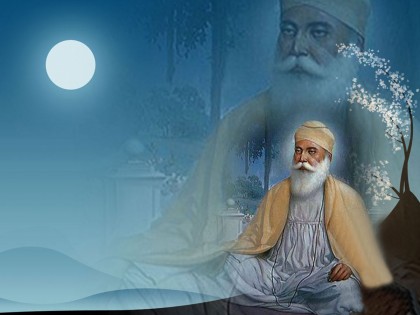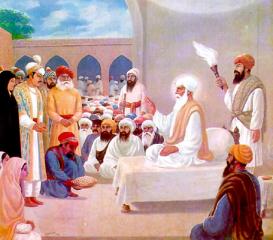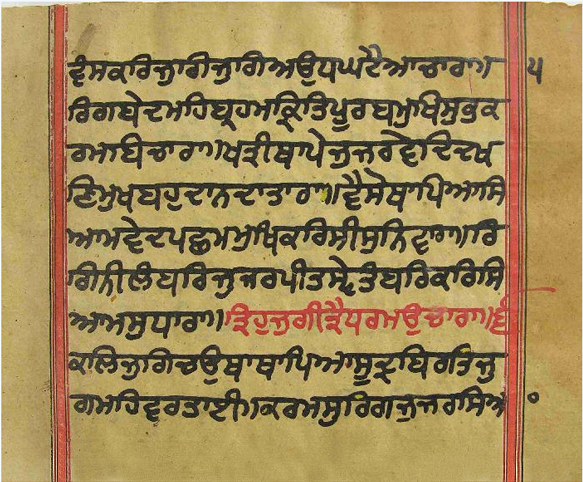AMAR DAS, GURU (1479-1574), the third of the ten Gurus of the Sikh faith, was born into a Bhalla Khatri family on Baisakh sudi 14, 1536 Bk, corresponding to 5 May 1479, at Basarke, a village in present day Amritsar district of the Punjab. His father\'s name was Tej Bhan and mother\'s Bakht Kaur; the latter has also been called by chroniclers variously as Lachchhami, Bhup Kaur and Rup Kaur. He was married on 11 Magh 1559 Bk to Mansa Devi, daughter of Devi Chand, a Bahil Khatri, of the village of Sankhatra, in Sialkot district, and had four children two sons, Mohri and Mohan, and two daughters. Dani and Bhani. Amar Das had a deeply religious bent of mind.
BHAGAT BHAGVAN, recipient of one of the bakhshi`shs or seats of the Udasi sect, was a contemporary of Guru Har Rai (1630-61). His original name was Bhagvan Gir. Little is known about his early life except that, according to Udasi sources, he was born in a Brahman family at Bodh Gaya and that he was a Sannyasi sadhu roving in search of spiritual solace. Having heard about Guru Nanak, Bhagvan Gir came to Kiratpur to meet his living successor.

GOD, a term used to denote any object, of worship or evocation, signifies the belief of most modern religions in the existence of a Supreme Being who is the source and support of the spatio temporal material world. Theologians remember Him by the name of God. The fundamental belief of Sikhism, too, is that God exists, not merely as an idea or concept, but as a Real Being, indescribable yet not unknowable. The Gurus, however, never theorized about proofs of the existence of God. For them He is too real and obvious to need any logical proof.












